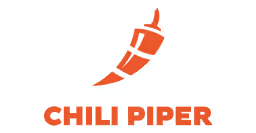Xant Alternatives
Considering a switch from Xant? This guide offers a direct comparison of 10 alternative sales engagement platforms to inform your decision.
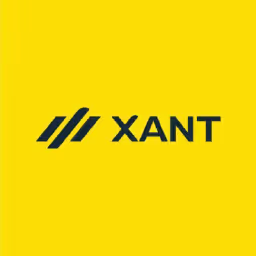
Xant is a popular choice for sales engagement, and for good reason. It performs well in helping teams manage their sales plays and prioritize leads. For many, it provides a clear structure for reps to follow, which is a definite plus.
However, some users report a steep learning curve and occasional integration challenges. This can lead teams to look for other options. We've analyzed the top alternatives to help you compare them against Xant using G2 reviews. Let's get started.
Explore 11x for Your Sales Team
If you want to add digital workers to your sales process, consider 11x. These autonomous agents handle repetitive tasks for your team.
This approach frees up your human reps to concentrate on high-value activities and deal closure. Explore how 11x can support your sales operations.
At 11x, we provide a unified GTM platform where AI agents manage your sales process. Our agent Alice finds prospects, runs outreach, and updates your CRM. Julian, another agent, qualifies inbound leads and books meetings. Our platform replaces separate tools for data enrichment, outreach, and email warmup.
Xant Alternatives
Here is a detailed review of the leading Xant alternatives. Each option is analyzed based on its pricing, core features, and its specific advantages and potential drawbacks when compared to Xant.
1) Outreach
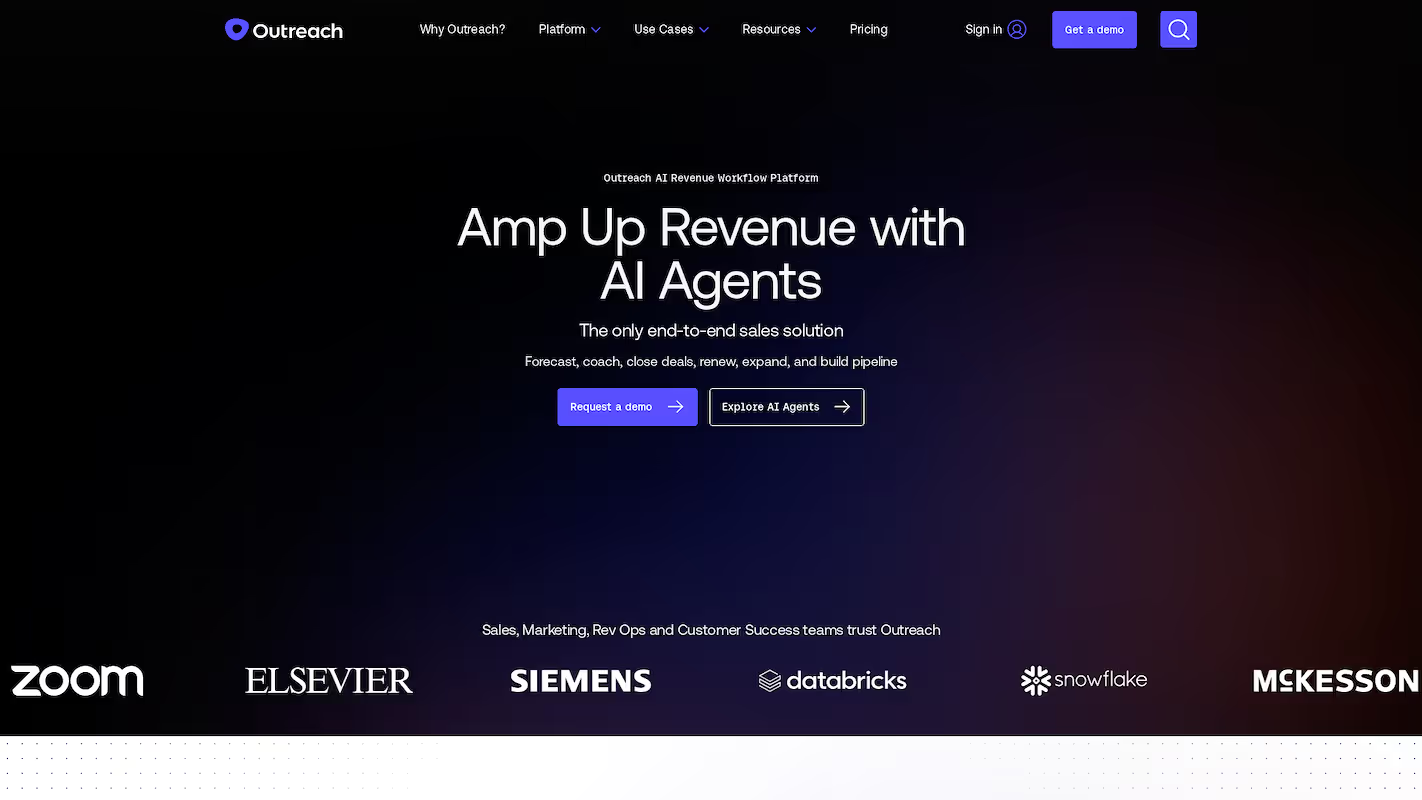
Outreach is an AI-powered platform for revenue teams, marketed as an end-to-end sales execution solution. It uses AI agents and data-driven workflows to help with forecasts, coaching, deal closure, and pipeline creation. The system also supports renewals and account expansion.
Teams use it to organize business books, send outbound communication to increase qualified pipeline, and manage deals with AI insights. It also helps scale coaching programs and retain customer accounts.
Outreach's Main Features
- Provides AI agents for various stages of the revenue cycle, including prospecting, deal management, and coaching.
- Offers AI-driven representative coaching through Kaia, which supplies meeting summaries, Q&A, and analytics.
- Uses Smart Account Assist and Smart Deal Assist to surface risks, next steps, and recent activity on any account or deal.
- Detects topics and buyer sentiment across meetings, calls, and emails to provide deeper insights.
How Outreach Compares To Xant
Average Review Score: 4.3/5 stars based on 3,479 G2 reviews.
- Outreach combines sales engagement, revenue intelligence, and revenue operations into one platform, unlike Xant, which focuses primarily on sales engagement.
- It provides AI-driven coaching with its Kaia feature, offering meeting summaries and analytics that are more advanced than Xant's standard tools.
- The Smart Deal Assist feature uses AI to surface risks and suggest next steps, providing more direct deal intelligence than Xant's lead prioritization functions.
- This tool analyzes buyer sentiment across calls and emails to provide deeper insights, a capability not central to Xant's platform.
Potential Drawbacks Of Outreach Vs. Xant
- Some users find Outreach's all-in-one platform, which includes revenue operations and intelligence, more complex to navigate than Xant's more focused sales engagement tools.
- Its integration with certain CRMs can present challenges. For example, some HubSpot users report sync issues, which might make Xant a more stable choice for teams on that specific CRM.
- The platform's extensive features can sometimes result in slower loading times, which may impact daily workflow efficiency compared to Xant's more streamlined system.
- Outreach's comprehensive feature set often comes with a higher price point, so teams that do not need advanced revenue intelligence may find Xant to be a more cost-effective solution.
Pricing and Cost-Effectiveness
Neither Xant nor Outreach provides public pricing details. User reviews indicate a high perceived cost for Outreach, which is consistent with its comprehensive platform that extends beyond sales engagement into revenue intelligence and operations.
2) Salesloft
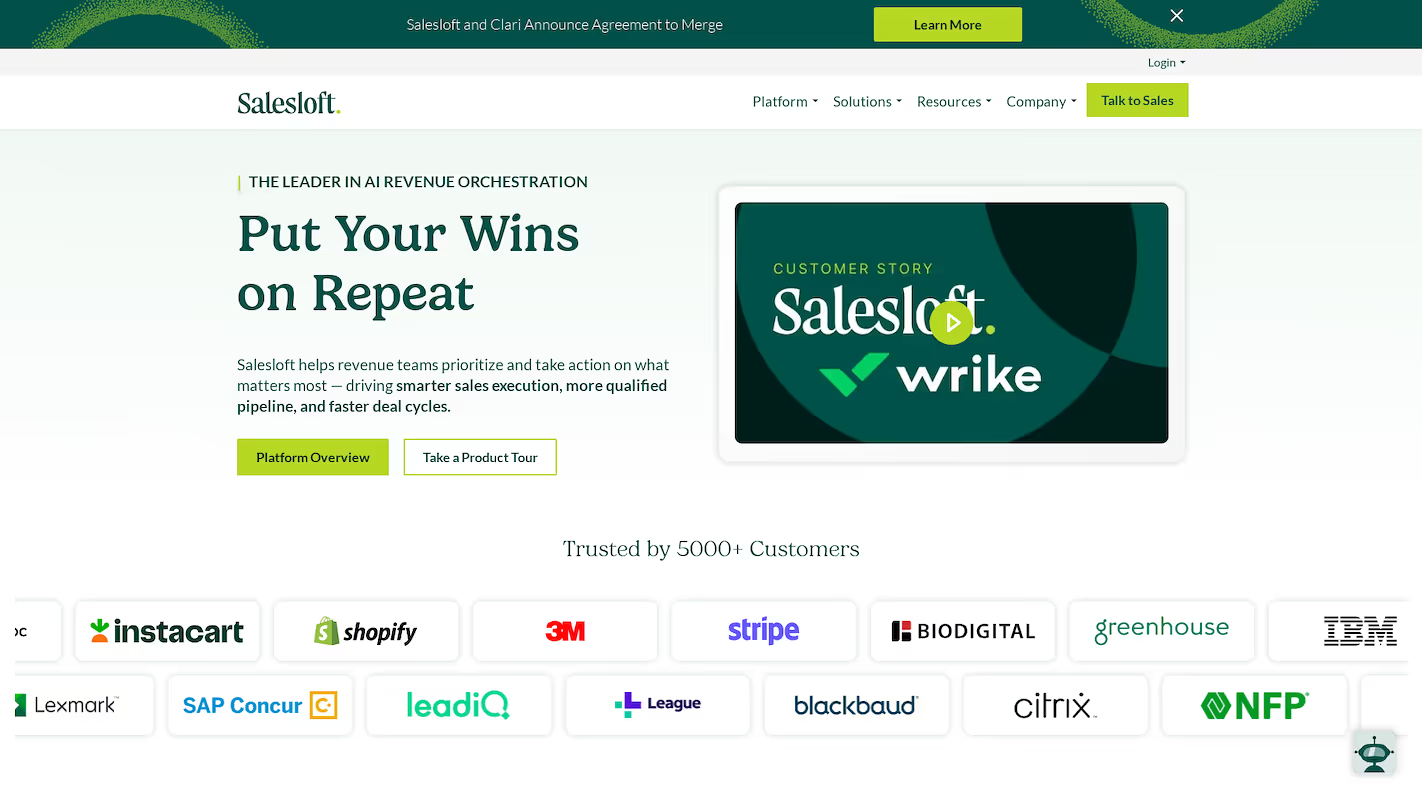
Salesloft is a Revenue Orchestration Platform. It aligns sales engagement, AI insights, conversation intelligence, deal management, and forecasting in a single workflow. AI agents surface buyer signals, prioritize actions, and automate tasks.
Teams use it to build pipeline, accelerate opportunities, and manage customer loyalty. The platform also supports data-driven forecasting to help confidently call sales numbers.
Salesloft's Main Features
- Automates structured workflows for pipeline building, lead nurturing, and renewals using its Cadence feature.
- Recommends the right actions at the right moments with Rhythm, an AI prioritization engine.
- Engages website visitors with real-time, personalized conversations through Drift AI chat agents.
- Combines real-time deal data, AI, and seller input for more accurate forecasting.
How Salesloft Compares To Xant
Average Review Score: 4.5/5 stars based on 4,145 G2 reviews.
- Salesloft uses its AI engine, Rhythm, to create a prioritized list of actions for reps, which offers a more dynamic workflow compared to Xant's lead prioritization.
- Its Cadence feature automates structured workflows for the entire sales cycle, including renewals, providing a broader scope than Xant's sales plays.
- The platform includes Drift AI chat agents to engage website visitors in real time, a feature not natively available in Xant.
- This tool provides more accurate sales forecasts by combining AI analysis with seller input, an advanced function not central to Xant's platform.
Potential Drawbacks Of Salesloft Vs. Xant
- Salesloft's all-in-one platform can be complex for teams that only need core sales engagement. In comparison, Xant sometimes offers a more straightforward user experience focused on sales plays.
- Some users report occasional call quality or email syncing issues. This might impact teams that rely on high-volume outreach, where Xant's core functions may feel more stable.
- The tool's extensive feature set can result in a steeper learning curve for new reps. Xant's more focused approach to lead prioritization might allow for quicker team adoption in some cases.
Pricing and Cost-Effectiveness
Salesloft does not provide public pricing, but user reviews suggest a high perceived cost. For the most accurate and up-to-date information, we recommend visiting Salesloft's official website.
3) HubSpot Sales Hub
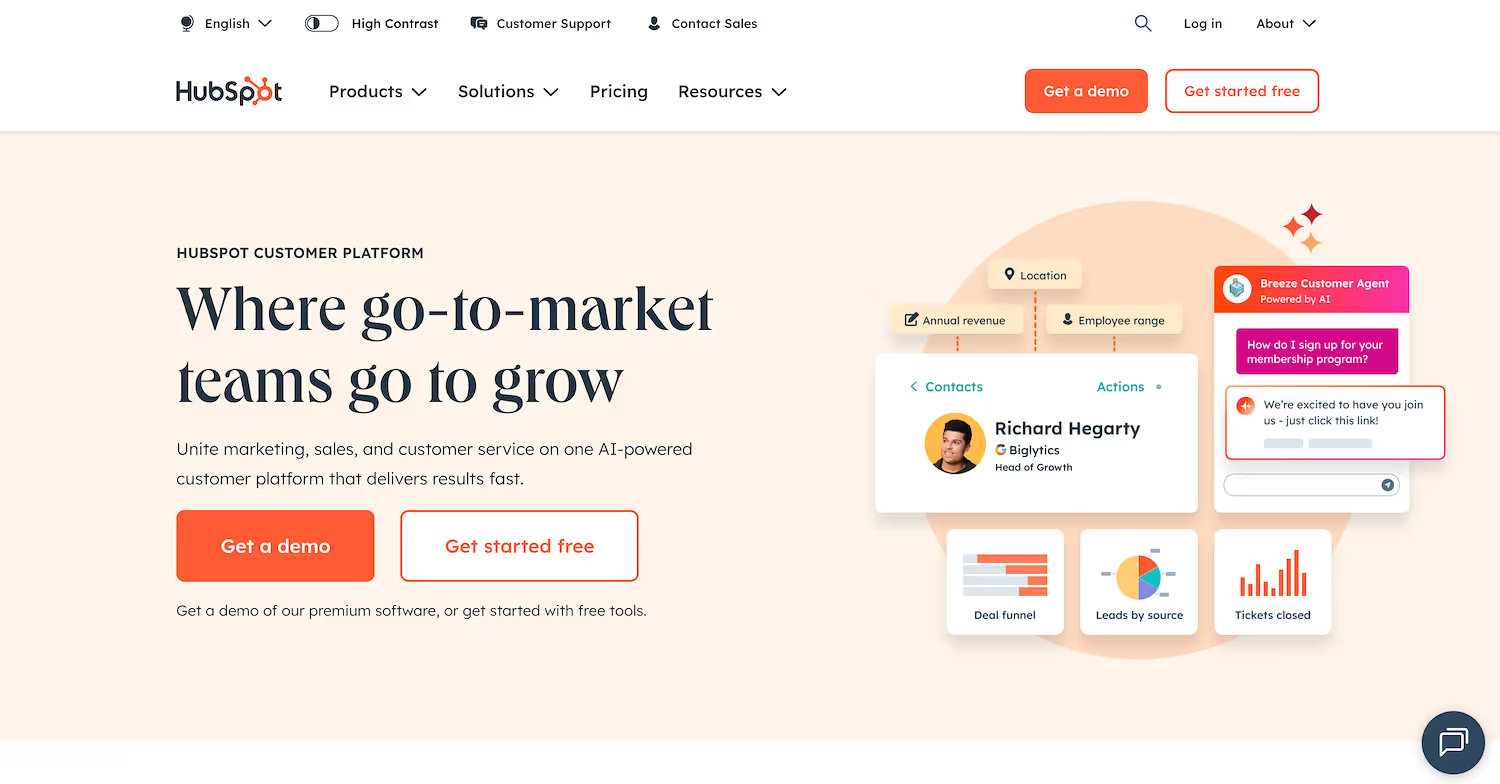
HubSpot Sales Hub is an AI-powered sales platform. It provides tools for prospect outreach, deal management, and customer engagement in one workspace. The software is built for productivity with a focus on quality over quantity. It helps sales teams build pipelines and close deals. The platform can run on its own Smart CRM or with an existing one, and it integrates with over 1,700 marketplace apps.
HubSpot Sales Hub's Main Features
- It provides AI agents, including a 24/7 chat agent to answer prospect questions and an agent for autonomous lead research and outreach.
- The platform includes deal management tools for quote creation, e-signatures, and payment processing within the workspace.
- It enables multi-channel sales automation that is triggered by specific prospect behaviors.
- The software offers conversation intelligence with call transcription and provides AI-powered forecasting and predictive lead scoring.
How HubSpot Sales Hub Compares To Xant
Average Review Score: 4.4/5 stars based on 12,407 G2 reviews.
- HubSpot Sales Hub is built on its own Smart CRM, which creates a single system for customer data. This is different from Xant, which integrates with external CRMs.
- It includes deal management tools like quote creation and payment processing directly within the platform, whereas Xant focuses more on pre-deal engagement.
- The platform allows for sales automation triggered by specific prospect actions. This offers more flexibility compared to the structured sales plays in Xant.
- This tool provides AI agents for tasks like lead research and a 24/7 chat agent for websites. Xant uses its system primarily to prioritize leads for reps.
Potential Drawbacks Of HubSpot Sales Hub Vs. Xant
- The platform's all-in-one design can be complex for teams that only need sales engagement tools. Some users note a learning curve, so Xant's focused system may offer quicker adoption for some teams.
- Its sales engagement features sometimes offer less customization compared to Xant. Teams that require highly tailored sales plays might find Xant's dedicated structure more flexible for their specific outreach strategies.
- HubSpot Sales Hub works best within its own CRM ecosystem. Teams with deep integrations in other CRMs might prefer Xant's model, which connects with external systems and can help avoid data sync issues.
Pricing and Cost-Effectiveness
HubSpot Sales Hub provides transparent pricing, with paid plans starting at $20 per seat/month, while Xant does not publicly list its costs. HubSpot’s tiered pricing, which includes Professional ($100/seat) and Enterprise ($150/seat) options, allows for more predictable budget planning. For the most current pricing, visit HubSpot Sales Hub's official website.
4) Apollo.io
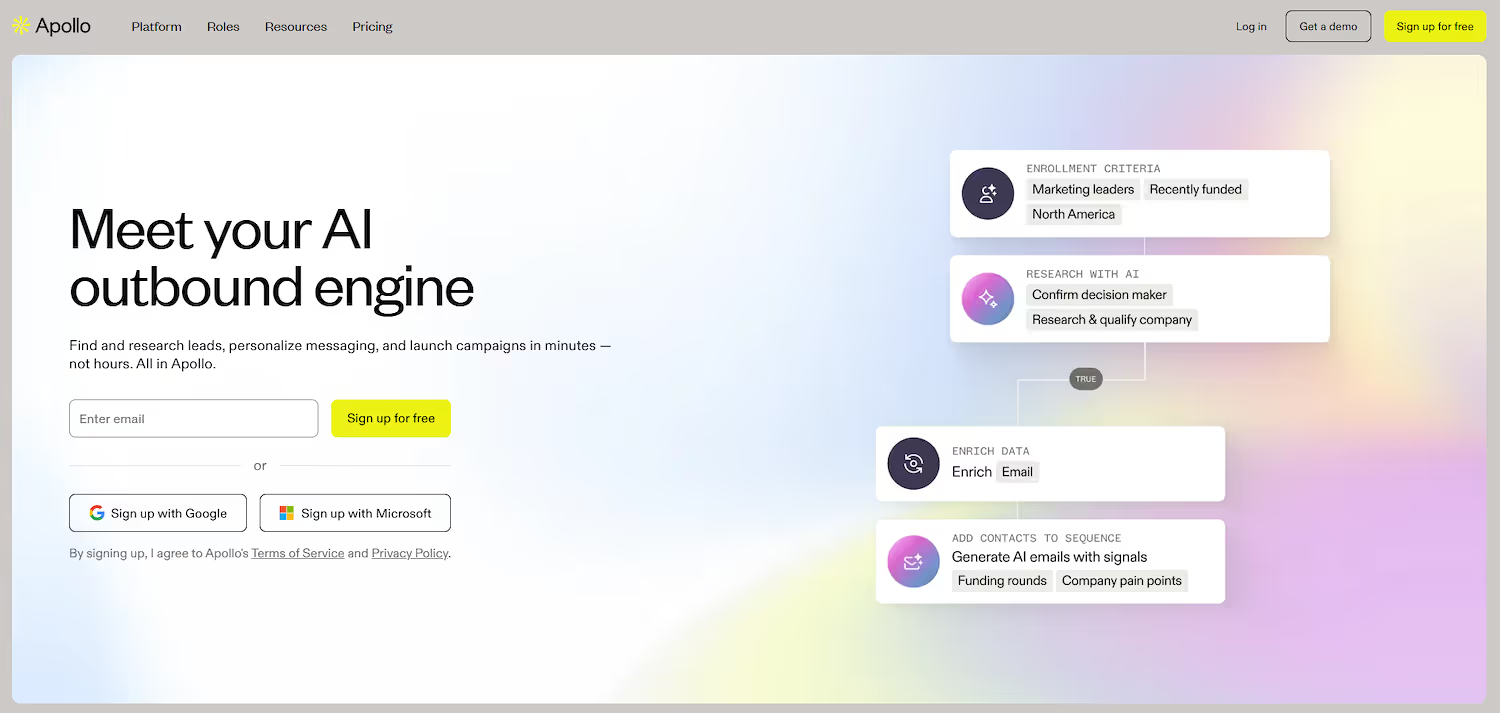
Apollo.io is a sales intelligence and engagement platform. It offers access to a database of contacts and company data. Sales teams use the platform to find potential customers and connect with them through automated sequences.
The system combines data, intelligence, and workflow tools. It supports the sales process from prospect discovery to initial contact and helps teams construct their pipeline with targeted information.
Apollo.io's Main Features
- Provides access to a database of contacts and company data to find potential customers.
- It connects with prospects through automated outreach sequences.
- The system combines data and workflow tools to help construct a sales pipeline.
How Apollo.io Compares To Xant
Average Review Score: 4.7/5 stars based on 8,904 G2 reviews.
- Apollo.io provides a built-in database of over 210 million contacts. This is different from Xant, which focuses on managing existing leads rather than sourcing new ones from a native data pool.
- The platform combines sales intelligence with engagement tools. This allows teams to handle prospecting and outreach in one place, a more integrated approach than Xant's focus on sales plays for existing contact lists.
- It offers automatic lead enrichment to add more data to prospect profiles. This provides deeper context for reps, which is a different function than Xant's system for prioritizing leads based on existing information.
- This tool lists its pricing publicly, including a free plan. This allows for more predictable budget planning compared to Xant, which requires a direct sales inquiry for cost information.
Potential Drawbacks Of Apollo.io Vs. Xant
- Some users report that Apollo.io's contact data can sometimes be inaccurate. This may require teams to spend extra time on verification, a step less common in Xant, which works with a company's existing lead lists.
- Apollo.io combines sales intelligence with engagement, which can be complex for teams that only need to manage sales sequences. Xant offers a more focused system for executing sales plays without the added layer of a built-in contact database.
- The platform's engagement features are part of a larger intelligence system. Teams that need highly structured sales plays, a core strength of Xant, might find Apollo's sequencing tools less specialized for that specific purpose.
Pricing and Cost-Effectiveness
Apollo.io offers transparent pricing with a free plan and paid tiers starting at $49 per user per month, making it a predictable choice for budget planning. In contrast, Xant does not publish its pricing, requiring a direct sales inquiry. For the most current pricing, visit Apollo.io's official website.
5) Groove

Groove is a sales engagement platform that provides sellers with a dedicated workspace. Teams use it to run multi-channel campaigns and manage their daily sales tasks. The system connects directly to a company's CRM for automatic activity logging and data synchronization.
This ensures all customer interactions are captured without manual data entry, which keeps the CRM as the central source of truth.
Groove's Main Features
- Provides a dedicated workspace for sellers to run multi-channel campaigns.
- Connects directly to a CRM for automatic activity logging and data synchronization.
- Captures all customer interactions automatically to eliminate manual data entry.
How Groove Compares To Xant
Average Review Score: 4.6/5 stars based on 193 G2 reviews.
- Groove provides a simple user experience, which contrasts with the steep learning curve some users report with Xant. This makes team onboarding a quicker process.
- It uses a shared inbox and ticketing system to centralize communications. This offers a different approach compared to Xant's focus on structured sales plays for managing outreach.
- This tool includes features for internal discussion around specific customer conversations. This provides a more direct collaboration method than managing shared sequences in Xant.
- Groove's workflow automation is based on customizable rules within its system. This is different from Xant, which automates sequences of outreach activities based on a predefined sales play.
Potential Drawbacks Of Groove Vs. Xant
- Groove's focus is on customer support tickets and shared inboxes. This structure can be less effective for complex, multi-step sales campaigns, where Xant provides dedicated sales plays.
- Some users report that the platform's reporting features are limited. This might be a drawback for sales teams that need detailed analytics on sequence performance, a function more central to a tool like Xant.
- The tool lacks the advanced lead prioritization engine found in Xant. As a result, sales reps might spend more time manually choosing which prospects to contact next, instead of following an optimized workflow.
Pricing and Cost-Effectiveness
Groove offers transparent pricing with plans starting at $15 per user per month, while Xant does not publish its costs. This makes Groove a more predictable option for budget planning. For the most current details, visit Groove's official website.
Explore 11x for Your Sales Team
If you want to add digital workers to your sales process, consider 11x. These autonomous agents handle repetitive tasks for your team.
This approach frees up your human reps to concentrate on high-value activities and deal closure. Explore how 11x can support your sales operations.
At 11x, we provide a unified GTM platform where AI agents manage your sales process. Our agent Alice finds prospects and runs outreach, while Julian qualifies inbound leads and books meetings. We replace separate tools for data enrichment, outreach, and email warmup.
Book a demo to see our agents in action.
6) VanillaSoft

VanillaSoft is a sales engagement platform that provides tools for sales teams. It is designed to manage sales cadences and structure the follow-up process with leads. The software helps sales representatives organize their workflow and execute outreach campaigns, with a focus on lead management and sales productivity.
VanillaSoft's Main Features
- Routes the next best lead to each rep automatically through a queue-based distribution system.
- Features power, preview, and progressive auto-dialing modes for outbound calling.
- Provides dynamic call scripts to keep sales reps on-message during conversations.
- Includes a built-in scheduling tool for booking meetings without leaving the platform.
How VanillaSoft Compares To Xant
Average Review Score: 4.6/5 stars based on 545 G2 reviews.
- VanillaSoft uses a queue-based system to automatically route the next best lead to a rep. This differs from Xant's lead prioritization, as it prevents reps from cherry-picking leads from a list.
- It offers multiple auto-dialing modes, such as progressive and power dialing, for high-volume call teams. This provides more specialized call functionality than Xant's general sales play structure.
- The platform provides dynamic call scripts that guide reps during live conversations. This is a more direct form of in-call support compared to Xant's focus on pre-defined outreach sequences.
- This tool includes a built-in scheduling tool to book meetings directly within the platform. This keeps the workflow in one place, unlike Xant, where reps might need to switch to a separate calendar application.
Potential Drawbacks Of VanillaSoft Vs. Xant
- VanillaSoft routes the next best lead to a rep automatically. This is different from Xant, which provides a prioritized list. Some reps may find the single-lead queue restrictive compared to viewing a full list of daily tasks.
- The platform's built-in CRM functions are sometimes reported as limited. Teams with a deep reliance on their existing CRM might find Xant's approach as a pure engagement layer offers a more seamless integration.
- Some users note that the tool has a dated user interface. This can be a drawback compared to Xant's system, as a modern interface often helps with faster team onboarding and daily ease of use.
Pricing and Cost-Effectiveness
Neither VanillaSoft nor Xant provides public pricing. User reviews for VanillaSoft suggest a high perceived cost. For the most accurate and up-to-date information, we recommend visiting VanillaSoft's official website.
7) Reply.io
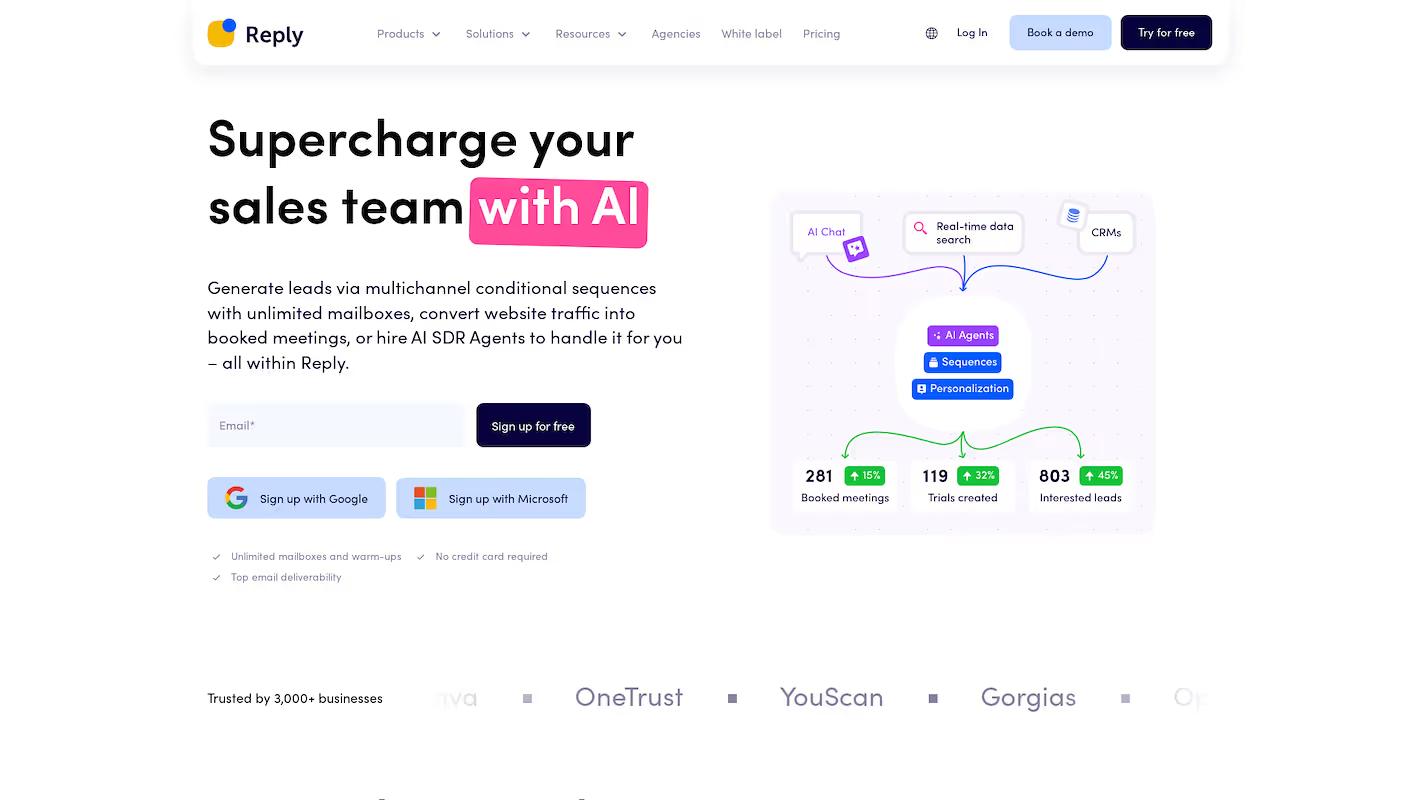
Reply.io is a sales engagement platform for sales teams to automate prospect outreach. It uses multi-channel sequences with email, calls, and social media tasks. The system provides a central workspace to manage outbound campaigns and follow up on inbound leads, which structures the sales process.
Reply.io's Main Features
- Provides a fully automated SDR agent, Jason AI, for prospecting, message generation, reply handling, and meeting booking.
- Includes a deliverability suite with over 30 tools, such as an Email Health Checker, free warm-ups, and delayed-send controls.
- Uses AI variables for paragraph-level personalization, which rewrites every email to be unique at scale.
- Offers real-time B2B data search with access to over one billion contacts, including intent signals.
How Reply.io Compares To Xant
Average Review Score: 4.6/5 stars based on 1,458 G2 reviews.
- Reply.io provides a fully automated SDR agent, Jason AI, to handle prospecting and outreach. This differs from Xant, which prioritizes leads for human sales reps to act on.
- It includes a deliverability suite with email health checks and warm-up tools. This offers a more specialized focus on email performance compared to Xant's general outreach functions.
- The platform uses AI to rewrite email paragraphs for unique personalization at scale. This is a different approach to Xant's structured sales plays, which often rely on standard templates.
- This tool offers a built-in database with intent signals for real-time prospecting. Xant, in contrast, primarily focuses on managing and sequencing a company's existing lead lists.
Potential Drawbacks Of Reply.io Vs. Xant
- Some users might find Reply.io's automation less structured than Xant's sales plays. Xant provides a more rigid, guided workflow, which can be better for teams that need strict control over complex sales processes and rep activities.
- The platform does not have a lead prioritization engine similar to Xant's. This means reps might spend more time manually selecting which prospects to contact, unlike in Xant, where the system automatically surfaces the most important leads.
- Its all-in-one approach, which includes a contact database, can sometimes lead to integration issues. In contrast, Xant functions as a pure engagement layer, which may offer a more seamless connection for teams deeply integrated with their existing CRM.
Pricing and Cost-Effectiveness
Reply.io offers transparent pricing with a free plan and paid tiers starting at $49 per user per month, while Xant does not publish its costs. This makes Reply.io a more predictable option for budget planning. For the most current pricing, visit Reply.io's official website.
8) Mixmax
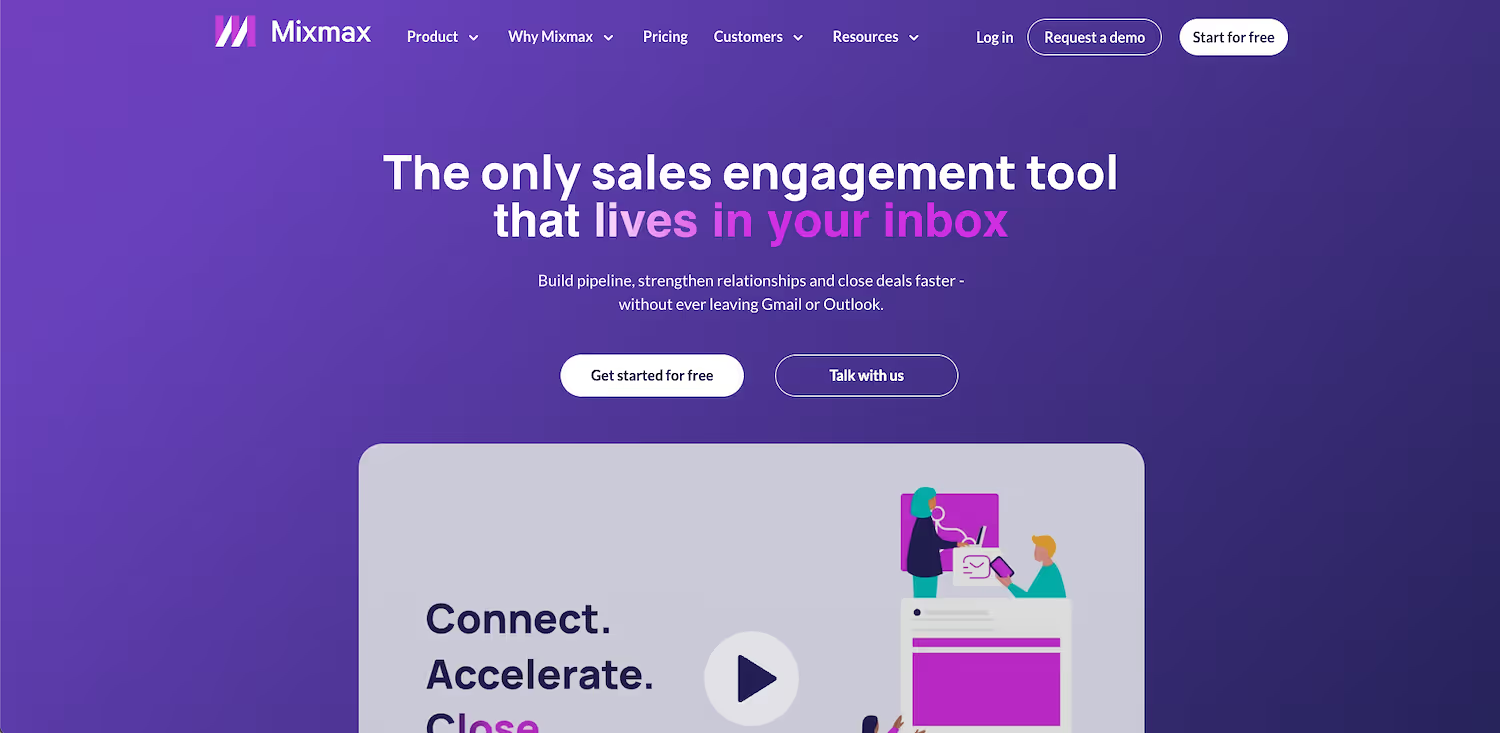
Mixmax is a sales engagement platform that works inside Gmail. It gives revenue teams tools like email templates, sequences, and a calendar function. Sales, customer success, and recruitment teams use it to automate outreach, monitor engagement, and manage communication with clients and candidates.
Mixmax's Main Features
- Operates directly within a user's Gmail inbox, which functions as the primary workspace.
- Includes email enhancements such as polls and surveys to increase recipient engagement.
- Provides AI-powered insights to guide reps on who to contact, when to reach out, and what message to send.
- Automates repetitive tasks like Salesforce updates directly from the inbox to save time.
How Mixmax Compares To Xant
Average Review Score: 4.6/5 stars based on 1,433 G2 reviews.
- Mixmax works directly inside a user's Gmail inbox, which keeps the sales workflow in one place, unlike Xant, which is a separate platform.
- It offers an intuitive interface that allows for quicker team adoption, which contrasts with the steeper learning curve some users report for Xant.
- The platform includes email enhancements like polls and surveys to make outreach more interactive, a feature not central to Xant's structured sales plays.
- This tool automates CRM updates directly from the user's inbox, offering a different workflow from Xant's platform-based synchronization.
Potential Drawbacks Of Mixmax Vs. Xant
- Mixmax does not have a dedicated lead prioritization engine like Xant. This means reps may need to manually select prospects, unlike in Xant, where the system automatically surfaces the most important leads.
- The tool operates entirely within Gmail. This can be a limitation for sales teams that use other email clients or prefer a standalone platform, which is the model Xant follows.
- Its sequences may offer less structure compared to Xant's dedicated sales plays. Some teams that require a rigid, guided workflow for complex sales processes might find Xant's system more suitable.
- The platform's focus is heavily on email engagement. Teams that rely on high-volume outbound calls might find Xant's broader sales play features to be a better fit for their needs.
Pricing and Cost-Effectiveness
Mixmax offers transparent pricing with plans starting at $49 per user per month, making it a predictable choice for budget planning, whereas Xant does not publish its costs. For the most current pricing, visit Mixmax's official website.
9) Yesware
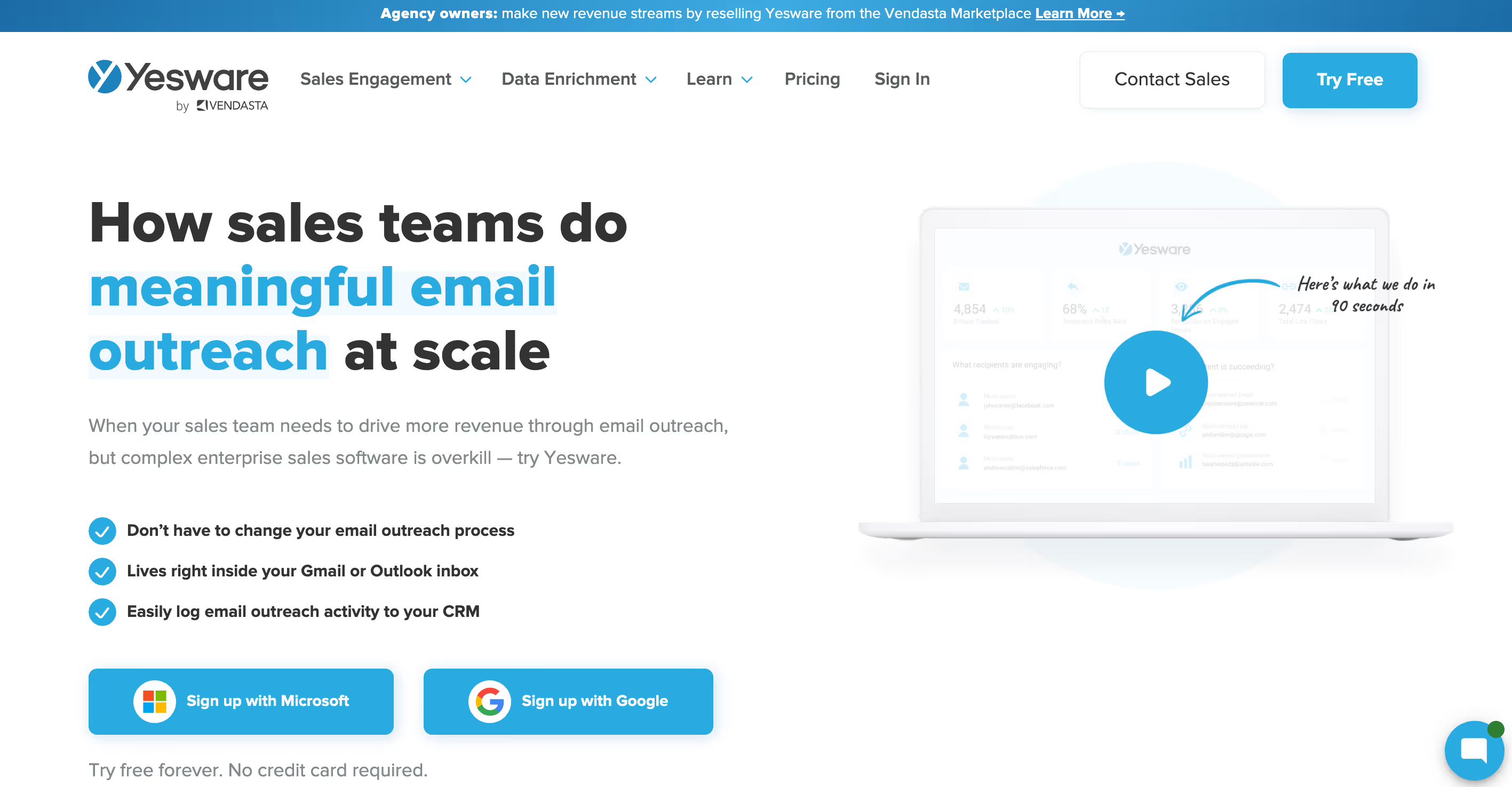
Yesware is a sales toolkit that operates inside a user's Gmail or Outlook inbox. It gives sales professionals tools to prospect, schedule meetings, and conduct follow-ups directly from their email client.
Sales teams use the platform to connect with prospects and automate outreach. Account managers also use it to manage customer communication, which centralizes all work within the inbox environment.
Yesware's Main Features
- Tracks email opens, link clicks, and attachment activity to provide engagement analytics.
- Integrates directly into Gmail and Outlook inboxes, adding its tools within the user's existing email client.
- Offers email scheduling and workflow management to help automate outreach tasks.
- Provides content management and reporting features to measure workflow performance.
How Yesware Compares To Xant
Average Review Score: 4.4/5 stars based on 819 G2 reviews.
- Yesware operates directly inside a user's Gmail or Outlook inbox, which keeps the sales workflow in one place. This is different from Xant, which is a separate platform that requires users to switch between applications.
- It offers a more straightforward user experience by adding tools to an existing email client. This can lead to quicker team adoption compared to Xant's separate system, which some users report has a steep learning curve.
- The tool provides detailed tracking for email opens, link clicks, and attachment views. This gives reps specific engagement insights, which is different from Xant's focus on prioritizing leads through its sales play system.
- This platform lists its pricing publicly, with plans starting at $15 per user per month. This allows for more predictable budget planning compared to Xant, which requires a direct sales inquiry for cost information.
Potential Drawbacks Of Yesware Vs. Xant
- Yesware does not have a lead prioritization engine. This means reps must manually choose which prospects to contact, unlike in Xant, where the system builds an automated task list based on lead scores.
- The tool operates entirely within a user's inbox. This can be a limitation for teams that do not use Gmail or Outlook, or for those who prefer a separate platform like Xant to manage sales activities.
- Its focus is on email-centric workflows. This might be less effective for teams with complex, multi-channel campaigns that include calls and social media, where Xant's structured sales plays offer more comprehensive guidance.
Pricing and Cost-Effectiveness
Yesware offers transparent pricing with plans starting at $15 per user per month, while Xant does not publish its costs. This makes Yesware a more predictable option for budget planning. For the most current pricing, visit Yesware's official website.
10) Klenty
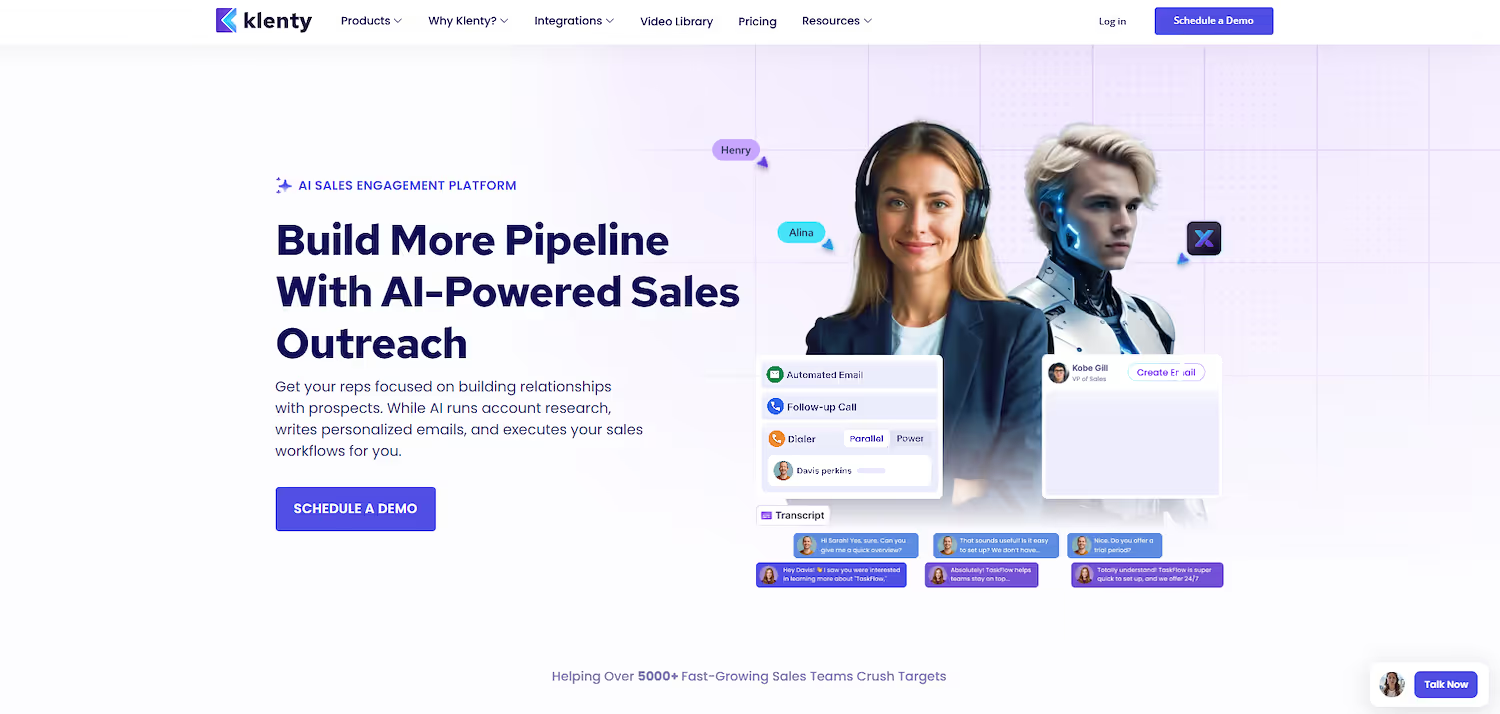
Klenty is a sales engagement platform that helps sales teams manage outreach across multiple channels. The system provides a framework to execute sales cadences that combine emails, calls, and social media tasks.
Teams use the platform to connect with prospects, automate follow-ups, and build their sales pipeline in a structured way.
Klenty's Main Features
- Provides analytics on email engagement, including open rates, link clicks, and attachment activity.
- Manages integrated sales workflows and includes tools for task management.
- Integrates with various CRMs and email platforms to support automated processes.
- Offers email scheduling and customization options for outreach campaigns.
How Klenty Compares To Xant
Average Review Score: 4.6/5 stars based on 387 G2 reviews.
- Klenty is often praised for its intuitive user interface in user reviews. This can make team onboarding faster compared to Xant, which some users report has a steeper learning curve.
- The platform offers flexible sales cadences that combine emails, calls, and social media tasks. This provides a different approach to Xant's more structured sales plays, which guide reps through a predefined sequence.
- It includes features for LinkedIn lead capture and automation. This is a specific function not central to Xant's platform, which focuses more on lead prioritization and managing existing outreach lists.
- This tool provides transparent pricing with plans starting at $50 per user per month. This allows for more predictable budget planning compared to Xant, which does not publish its costs.
Potential Drawbacks Of Klenty Vs. Xant
- Klenty does not offer a lead prioritization engine like Xant. Reps may need to manually select prospects, instead of using an automated task list built on lead scores.
- The platform's flexible cadences might offer less structure compared to Xant's dedicated sales plays. Teams that need a rigid, guided workflow for complex sales processes may find Xant's system more suitable.
- Some users report occasional system lag, which could impact productivity for high-volume teams. In contrast, Xant is designed to manage complex sales plays with a focus on stable performance.
Pricing and Cost-Effectiveness
Klenty offers transparent pricing with plans starting at $50 per user per month, while Xant does not publish its costs. This makes Klenty a more predictable option for budget planning. For the most current pricing, visit Klenty's official website.
Which One Should You Go With?
Choosing the right Xant alternative depends on your team's specific needs, budget, and existing tech stack. This guide reviewed several leading options to help you make an informed decision for your sales operations.
If your goal is to automate sales tasks, 11x offers a different approach. Our AI agents handle prospecting, outreach, and lead qualification, allowing your team to focus on closing deals. This replaces the need for separate data and outreach tools.



